Nongae Shrine (Uiamsa Shrine) (논개사당(의암사))
0m 13024 2024-04-07
393, Hannuri-ro, Jangsu-gun, Jeonbuk-do
+82-63-350-2326
Uiamsa Shrine was built to the memory of Chu Nongae, who sacrificed her life during the Imjin War (Japanese Invasion of Korea). In 1846, the Nongae-saeng-jang-hyang-su-myeong-bi monument was put up in praise of Nongae’s patriotism. In 1955, a shrine was built and named Uiamsa, which was then moved to the current location in 1974. Within the precincts of the shrine are a memorial stone, the portrait of Nongae by artist Kim Eun-ho, and three gates Woesammun, Naesammun and Chunguimun erected one after another. At the memorial hall, the existing possessions of Nongae and her husband General Choi Gyeong-hoe are on display. The annual Nongae Festival takes places on September 3rd by the lunar calendar, during which memorial services and cultural events are held to commemorate Nongae.
Jangsu Hanurang Sagwarang Festival (장수 한우랑사과랑축제)
517.5827705282678m 31934 2024-04-06
393, Hannuri-ro, Jangsu-gun, Jeonbuk-do
+82-63-350-2357
Jangsu specializes in red-colored agricultural products, including hanu (Korean beef), apples, tomatoes, and omija. Accordingly, the theme of the Jangsu Hanurang Sagwarang Festival is “RED,” the first of its kind in Korea.
Jangansan County Park (장안산군립공원)
2.8 Km 14288 2024-04-07
Jangan-ri, Jangsu-gun, Jeonbuk-do
+82-63-350-2445
Situated in Jangsu-gun in Jeollabuk-do, Jangansan Mountain (alt. 1,237 m) was officially designated a county park in 1986. Deoksan Valley Stream, which originates in the southwestern part of Jangansan Mountain and flows into Yongnimcheon Stream, is famous for the Deoksanyongso Waterfall Basins and the 20 or so large rocks that dot its banks. The sprawling fields of reeds along the East Ridge are also a major draw, undulating like waves of gold in the crisp autumn wind. In particular, the east hiking path on Jangansan Mountain is lined with a wide field of silver grass making it popular among hikers.
Waryong Recreational Forest (와룡자연휴양림)
5.6 Km 20260 2024-04-07
362, Biryong-ro, Jangsu-gun, Jeonbuk-do
+82-63-350-2477
Waryong Recreational Forest opened in June 1996 and serves as a family-friendly vacation destination to interact with nature. The park can accept up to 1,200 visitors per day. It also has a camping site as well as lodging facilities for both individual and group visitors. Children can learn about nature and the ecosystem through a variety of programs as well as enjoy forest bathing.
Banghwadong Recreational Forest (방화동 자연휴양림,가족휴가촌)
6.0 Km 6039 2024-04-07
778, Banghwadong-ro, Jangsu-gun, Jeonbuk-do
+82-63-350-2474
Banghwadong Recreational Forest is located at the foot of Jangansan Mountain. The mountain trail from Deoksanyongso Pond leading to Banghwadonggyegok Valley features nature learning centers and adventure games facilities. The clean valley is lined with oddly shaped cliffs, shrubs and trees, which all combine into a splendid view. The forest is situated at a highland more than 500 meters above sea level. It is surrounded by mountains that are over a thousand meters above sea level, so the temperature is low and the water at the valley is cool even in the summer.
There are log cabins, group accommodation facilities, and training halls by the valley to accommodate group visits, conferences, gatherings and seminars. The recreational forest also operates Banghwadong Family Vacation Village for family visitors, equipped with accommodation facilities, various camping sites, and a wood carving experience center.
Jinan Baegundonggyegok Valley (백운동계곡(진안))
9.4 Km 51867 2024-04-07
Baegam-ri, Baegun-myeon, Jinan-gun, Jeonbuk-do
Baegundonggyegok Valley is between Deoktaesan Mountain and Seongaksan Mountain. The water in the valley flows into the Seomjingang River, and there are many small waterfalls and wide rocky areas. The water is abundant, and the waterfalls are cool. The sound of the waterfalls in the dense forest is enjoyable to listen to, and it is famous for its scenery that makes visitors feel like they are in paradise.
Birthplace of Nongae (논개생가)
9.6 Km 15425 2024-04-07
558, Uiam-ro, Jangsu-gun, Jeonbuk-do
+82-63-350-1636
Nongae was born in Juchon Village in the 7th year of King Seonjo (September 3, 1575). A clever and beautiful young lady, Nongae voluntarily registered as a gisaeng (female entertainer) at the age of 19 when the nation was at risk of invasion during the Imjin War. While entertaining one evening, she led Japanese general Keyamura Rokusuke to the edge of a cliff and flung her arms around him, casting both herself and the general to their deaths in the Jinju Namgang River.
To commemorate her faithfulness and allegiance to her country, a project to restore her place of birth was completed in September 2000, drawing many visitors. Nearby Nongae’s birthplace are many tourist attractions, including Deogyusan Mountain and Odongje Pass and a hiking trail that connects Jangansan County Park, Jijigyegok Valley, and Donghwa Dam.
Seongsusan Recreational Forest (성수산자연휴양림)
10.2 Km 16160 2024-04-07
374, Seongsusan-gil, Imsil-gun, Jeonbuk-do
+82-63-640-2475
Located in Imsil, Jeollabuk-do, Seongsusan Recreational Forest (성수산자연휴양림) grows in a deep valley that contains historic sites from the founding days of Goryeo through to the Joseon dynasty. Because of its secluded location and clean air the forest has recently become a new popular destination for summer vacationers.
There is a children’s playground, and above it are condominium-type lodgings which can accommodate over 200 guests. There is a camping ground as well where all you hear are the sounds of flowing running water and chirping birds. It is an out-of-the-way little hideaway ideal for relaxation.
Seonggwansa Temple (성관사)
14.0 Km 7760 2024-04-07
492-83, Jangmu-ro, Jangsu-gun, Jeonbuk-do
+82-63-353-0396
Seonggwansa Temple is located in Jangsu-gun in Jeollabuk-do. It is said that the temple was established during the Goryeo dynasty (918-1392). The temple was designated as a traditional temple in July 1999.
Eunsusa Temple (은수사)
16.1 Km 8659 2024-04-07
406, Maisannam-ro, Jinan-gun, Jeonbuk-do
+82-63-433-2502
The temple located upon Maisan Mountain was called Sangwonsa Temple during the early Joseon dynasty and was later known as Jeongmyeongam Hermitage. According to the Korean Language Society, the temple began to be called Eunsusa (meaning ‘Silver Water Temple’) after King Taejo (the founder of the Joseon dynasty) visited the temple and remarked that the water flowing nearby was as clean and smooth as pure silver.
The temple is home to the largest known Beopgo (Buddhist drum used for rituals), which was produced in 1982. A stone sculpture and a statue of Granny Samsin (a goddess that looks after babies’ births and keeps them healthy) also stand at the temple. However, the temple’s most treasured assets are its two Natural Monuments: Emerald Gaiety (a climbing vine, Natural Monument No. 380) and the Cheongsil Pear Tree (Natural Monument No. 386). Reverse icicles, though found all over the mountainsides, are most readily and abundantly found in the Eunsusa Temple area.
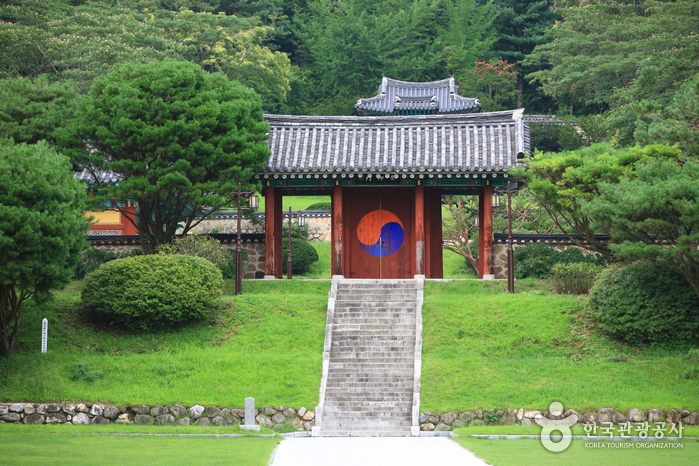
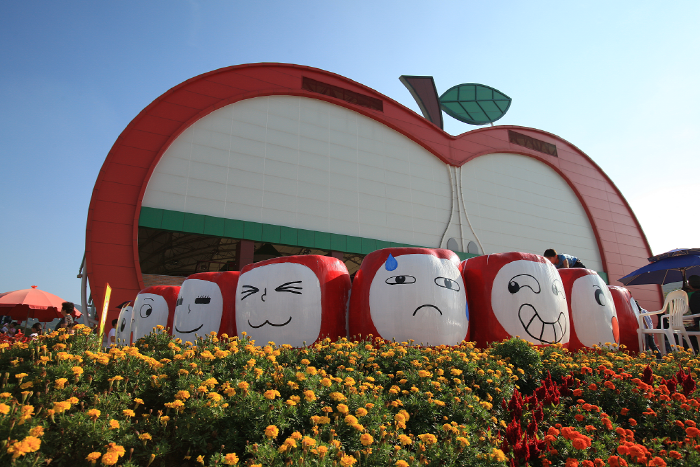

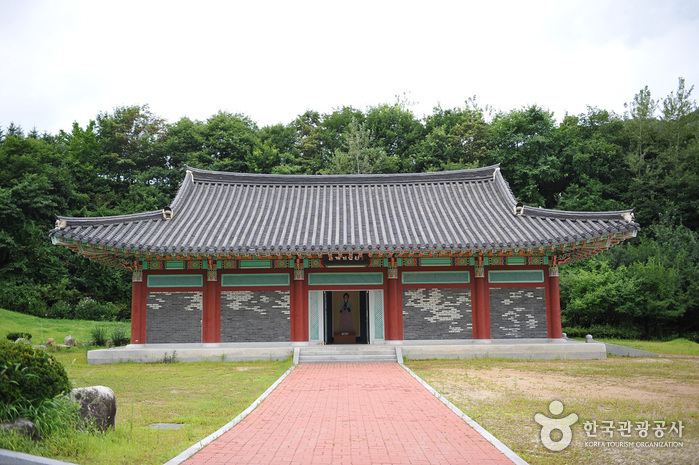
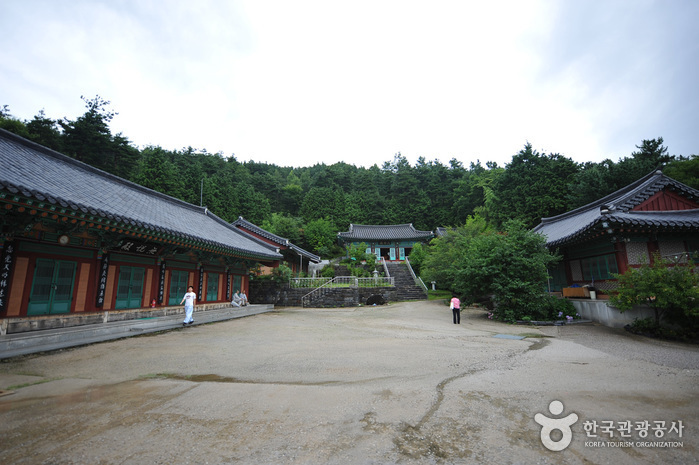
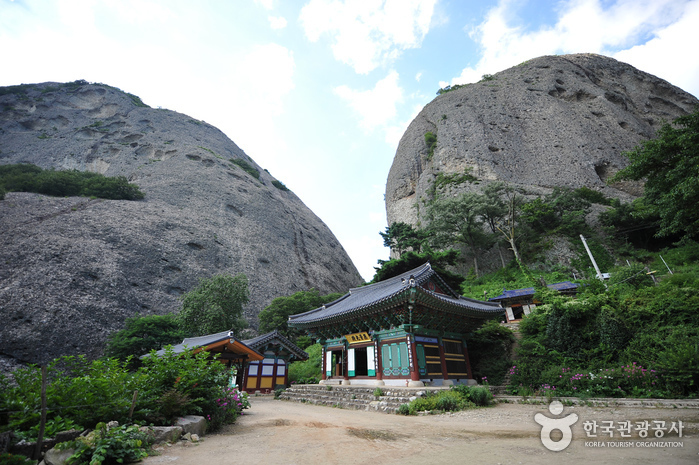
 English
English
 한국어
한국어 日本語
日本語 中文(简体)
中文(简体) Deutsch
Deutsch Français
Français Español
Español Русский
Русский